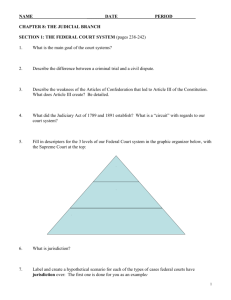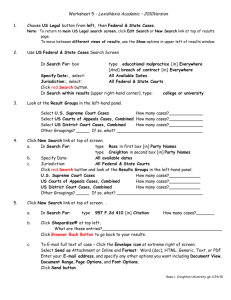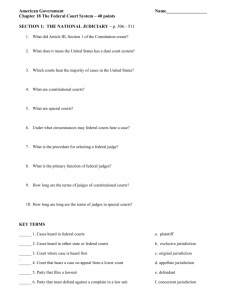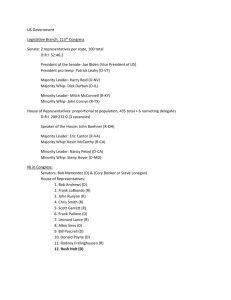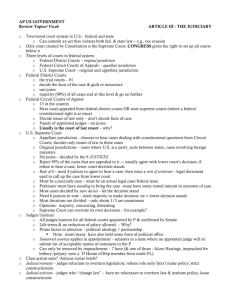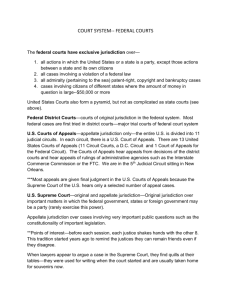the Judiciary Act of 1891
advertisement
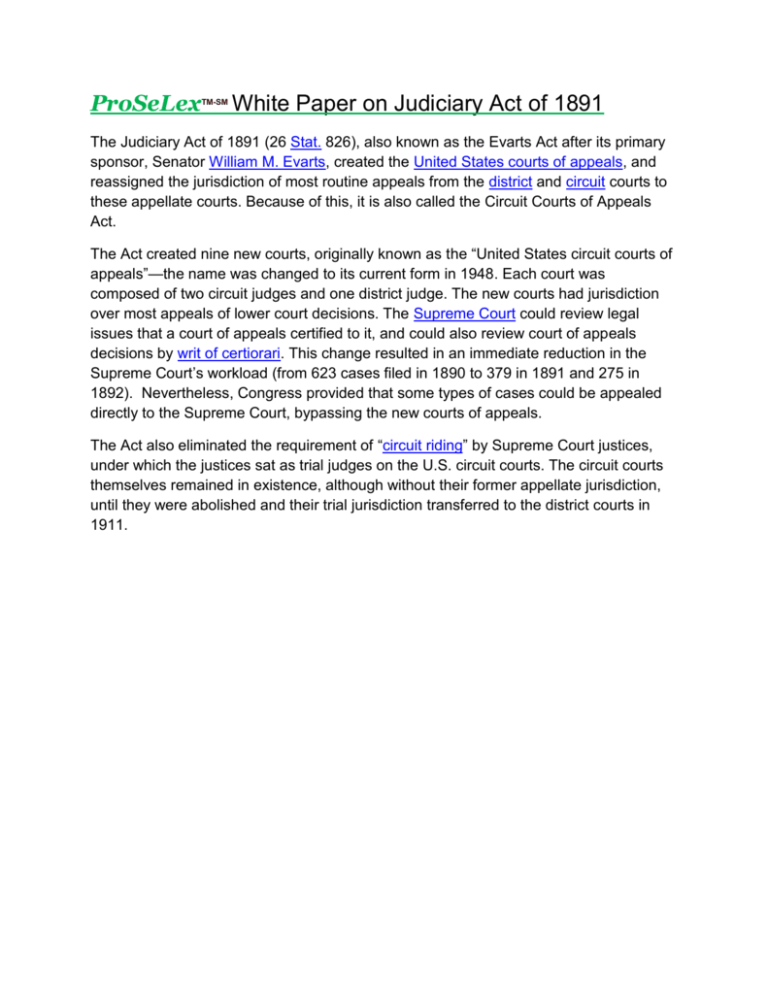
ProSeLex TM-SM White Paper on Judiciary Act of 1891 The Judiciary Act of 1891 (26 Stat. 826), also known as the Evarts Act after its primary sponsor, Senator William M. Evarts, created the United States courts of appeals, and reassigned the jurisdiction of most routine appeals from the district and circuit courts to these appellate courts. Because of this, it is also called the Circuit Courts of Appeals Act. The Act created nine new courts, originally known as the “United States circuit courts of appeals”—the name was changed to its current form in 1948. Each court was composed of two circuit judges and one district judge. The new courts had jurisdiction over most appeals of lower court decisions. The Supreme Court could review legal issues that a court of appeals certified to it, and could also review court of appeals decisions by writ of certiorari. This change resulted in an immediate reduction in the Supreme Court’s workload (from 623 cases filed in 1890 to 379 in 1891 and 275 in 1892). Nevertheless, Congress provided that some types of cases could be appealed directly to the Supreme Court, bypassing the new courts of appeals. The Act also eliminated the requirement of “circuit riding” by Supreme Court justices, under which the justices sat as trial judges on the U.S. circuit courts. The circuit courts themselves remained in existence, although without their former appellate jurisdiction, until they were abolished and their trial jurisdiction transferred to the district courts in 1911.

